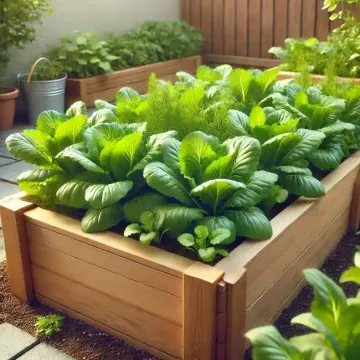Mustard greens, a staple in Southern cuisine and an essential leafy vegetable worldwide, belong to the Brassica family, which includes cabbage, kale, and broccoli. Known for their slightly spicy flavor, mustard greens are a versatile and nutritious addition to any garden. Whether you enjoy them sautéed, in salads, or as a garnish, mustard greens are easy to grow and thrive in a wide range of climates.
History of Mustard Greens
Mustard greens (Brassica juncea) have been cultivated for thousands of years, originating in the Himalayan region of India. They were introduced to Europe in the early centuries and became popular in Mediterranean and Asian cuisines. Today, mustard greens are grown globally, with various cultivars developed for different climates and culinary preferences.
Health Benefits
Mustard greens are a powerhouse of nutrition, offering numerous health benefits. Rich in vitamins A, C, and K, as well as folate and fiber, these greens are excellent for boosting the immune system, improving heart health, and supporting digestion. The high content of antioxidants and anti-inflammatory compounds in mustard greens makes them a valuable addition to a healthy diet.
Culinary Uses
Mustard greens are popular in Southern American, Asian, and Mediterranean cuisines. Their peppery flavor adds a distinctive kick to dishes. In Southern cooking, mustard greens are often braised with smoked meats, onions, and spices. In Asian cuisine, they are stir-fried or pickled. They can also be used fresh in salads or blended into smoothies for a nutritional boost.
Growing Tips
Growing mustard greens in your home garden is a simple and rewarding experience. Here are some tips to ensure a bountiful harvest:
- Planting: Mustard greens prefer cool weather, making them ideal for early spring and fall planting. Sow seeds directly into the garden about ¼ to ½ inch deep and 3 inches apart. Thin seedlings to 6 inches apart once they’ve grown a few inches tall. For a continuous harvest, plant seeds every two weeks.
- Soil: These greens thrive in well-drained, fertile soil rich in organic matter. A soil pH of 6.0 to 7.5 is ideal. Adding compost or aged manure to your garden bed before planting will give your mustard greens a good start.
- Watering: Mustard greens need consistent moisture to grow tender and flavorful leaves. Water them regularly, especially during dry spells. Avoid overhead watering, which can promote disease; instead, use a soaker hose or drip irrigation system.
- Sunlight: These plants do best in full sun but can tolerate partial shade. If you live in a warmer climate, some afternoon shade can help prevent the greens from bolting (going to seed) too quickly.
- Pest Control: Common pests that affect mustard greens include aphids, flea beetles, and cabbage loopers. Use insecticidal soap, neem oil, or companion planting (such as with marigolds or garlic) to deter pests. Floating row covers can also protect young plants from insect damage.
- Harvesting: Mustard greens are ready to harvest within 30 to 45 days after planting. You can harvest the outer leaves as needed or cut the entire plant at the base for a one-time harvest. For continuous growth, leave the center leaves intact. The leaves are most tender and flavorful when young but can be harvested at any stage.
Varieties to Consider
There are several varieties of mustard greens, each offering different flavors, textures, and appearances. Here are a few popular choices:
- Southern Giant Curled: A classic Southern variety with large, ruffled leaves and a mild, spicy flavor.
- Red Giant: This variety features stunning reddish-purple leaves with a strong mustard flavor, perfect for adding color to salads.
- Mizuna: A Japanese variety with finely divided leaves and a milder taste, often used in salads and stir-fries.
- Florida Broadleaf: A heat-tolerant variety with broad, light green leaves and a mild flavor, making it suitable for warm climates.
Growing mustard greens in your home garden is a satisfying way to enjoy fresh, nutrient-dense greens throughout the year. With their fast growth and versatility, mustard greens are an excellent choice for gardeners of all experience levels. Whether you’re looking to spice up your meals or add variety to your garden, mustard greens are a valuable and delicious addition to your home gardening repertoire.

